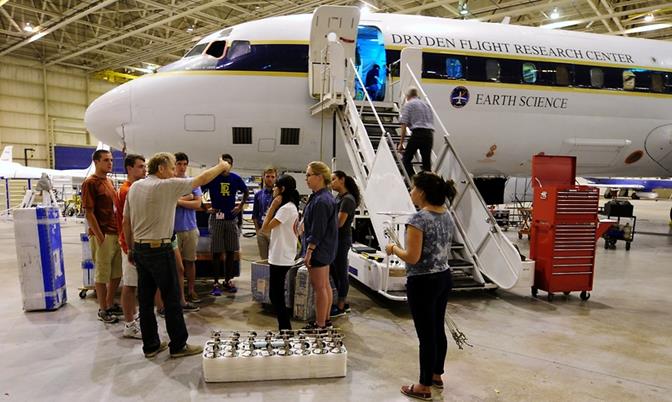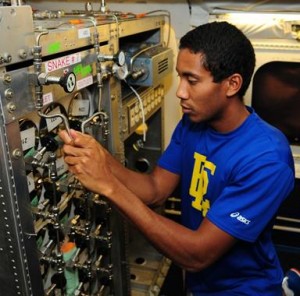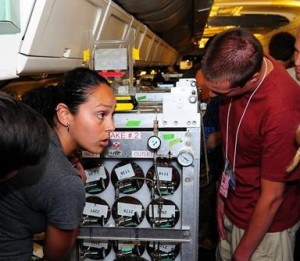
PALMDALE – Thirty-two undergraduate students from colleges and universities across the country came to Palmdale this week for NASA’s eight-week science program designed to immerse them in Earth Science research.
Flying aboard NASA’s DC-8 airborne laboratory, students will measure pollution, aerosols (small particles suspended in the atmosphere) and air quality in the Los Angeles basin and California’s central valley. They will also use remote sensing instruments to study forest ecology in the Sierra Nevada and ocean biology along the California coast.

Now in its sixth year, NASA’s Student Airborne Research Program (SARP) provides a unique opportunity for undergraduate students majoring in the sciences, mathematics and engineering to participate in all aspects of a NASA Airborne Science research campaign.
SARP participants are given a rare behind-the-scenes look at the instrument installation, flight planning and scientific data collection that is the basis of every successful NASA Earth Science airborne campaign.
SARP began June 16 at NASA Armstrong Flight Research Center’s facility in Palmdale, with lectures by university faculty members, NASA scientists and NASA program managers.

The students will be aboard the DC-8 on five flights during the week of June 23. They will acquire multi-spectral images of kelp beds in the Santa Barbara Channel and of forests in the Sierra Nevada.
In addition, the students will fly over dairies and oil fields in the San Joaquin Valley, parts of the Los Angeles basin and the Salton Sea at altitudes as low as 1,000 feet in order to collect air samples, measure aerosols and air quality. During the final flight, half of the students will be in the field taking ground validation or complementary measurements while the DC-8 flies overhead.
The final six weeks of the program will take place at the University of California, Irvine where students will analyze and interpret the data they collected from science instruments on the aircraft. At the conclusion of the program, the students will each deliver final presentations about their results and conclusions in front of an audience of NASA scientists and administrators, university faculty members and their fellow SARP students. In past summers, many students have gone on to present their SARP research projects at national conferences.
Students participating in the 2014 SARP represent 32 different colleges and universities from across the United States. They were competitively selected based on their outstanding academic performance, future career plans and interest in the Earth System Science.
View video about last year’s Student Airborne Research Program.
–
Will says
Absolutely amazing program!